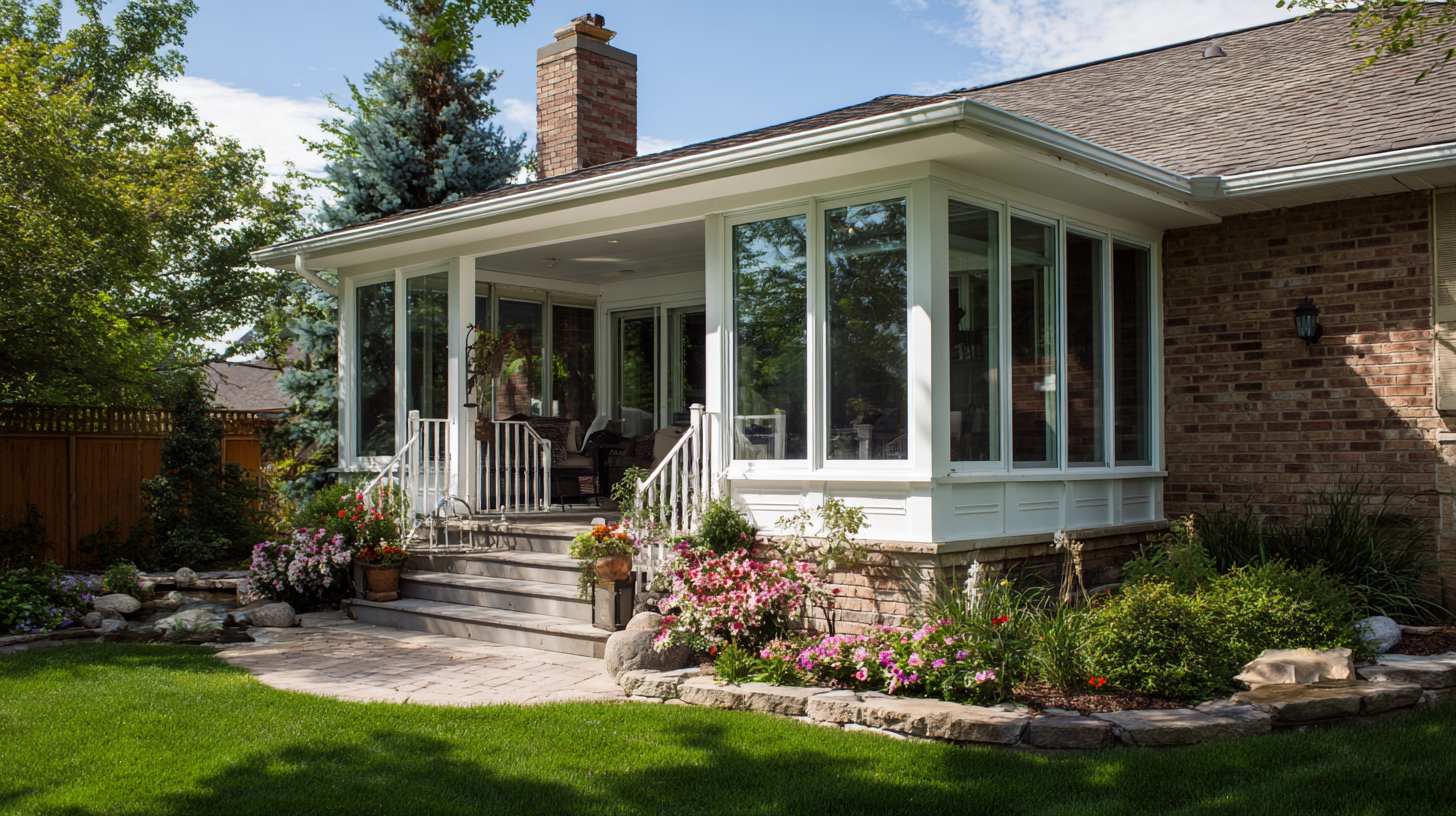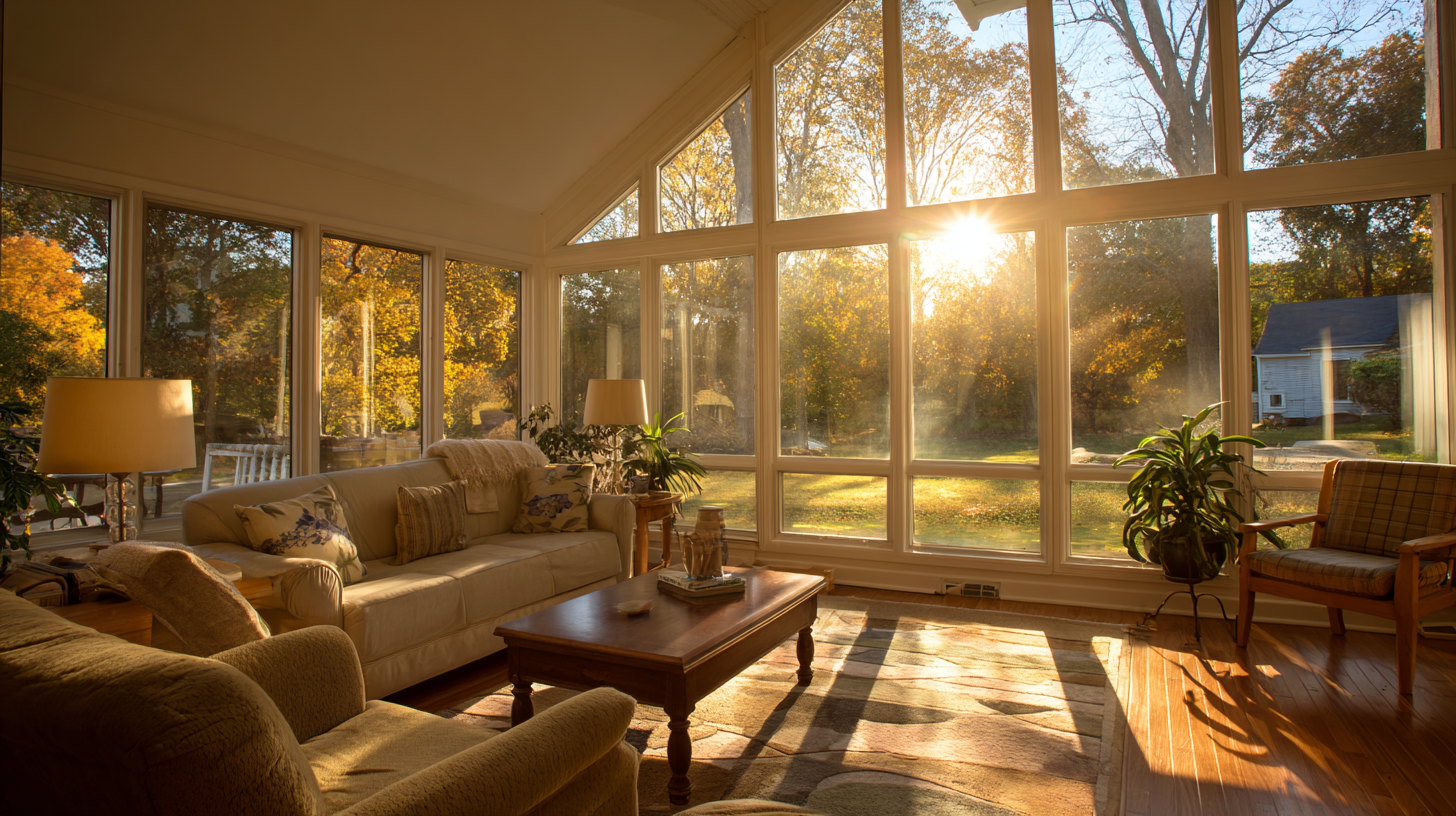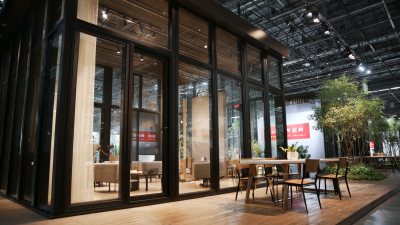Transform Your Living Space: The Ultimate Guide to Home Windows Replacement for Energy Efficiency
In today's world, where energy efficiency and environmental sustainability are paramount, home windows replacement has emerged as a crucial step for homeowners looking to enhance their living spaces. According to the U.S. Department of Energy, windows account for 25%-30% of residential heating and cooling energy use, making the choice of windows a significant factor in overall energy consumption.

Research from Energy Star indicates that upgrading to energy-efficient windows can save homeowners an average of 12% on their energy bills, translating into substantial savings over time. Additionally, the National Fenestration Rating Council (NFRC) provides critical ratings that help consumers select windows that meet their energy needs while ensuring comfort and style. This ultimate guide aims to equip you with the knowledge and tools necessary to navigate the home windows replacement process, ultimately transforming your living space into a more energy-efficient and aesthetically pleasing environment.
Understanding the Importance of Energy-Efficient Windows in Your Home
Energy-efficient windows are pivotal in the quest for a sustainable home, particularly as energy prices continue to rise and climate change challenges become more pressing. Replacing standard windows with energy-efficient alternatives can noticeably enhance the thermal insulation of a home, reducing reliance on heating and cooling systems. This switch not only results in significant energy savings but also contributes to a lower carbon footprint, making it a double win for homeowners looking to embrace eco-friendly living.
Moreover, the financial implications of energy-efficient window replacement are compelling. As highlighted in recent analyses, the initial investment can often be recouped through lower energy bills over time, transforming what was once seen as a luxury into a smart financial decision. Homeowners are increasingly aware that enhancing their properties with energy-efficient features not only boosts comfort but also adds considerable value to their homes, making them a desirable option in today’s real estate market. Embracing these upgrades signals a commitment to sustainability that appeals to environmentally conscious buyers.
Transform Your Living Space: The Ultimate Guide to Home Windows Replacement for Energy Efficiency
| Window Type | Energy Efficiency Rating (U-Factor) | Estimated Energy Savings (%) | Average Cost per Window ($) |
|---|---|---|---|
| Double Glazed | 0.30 | 20-25 | 300 |
| Triple Glazed | 0.22 | 30-35 | 500 |
| Low-E Coated | 0.25 | 15-20 | 400 |
| Vinyl | 0.35 | 10-15 | 250 |
| Wood | 0.30 | 15-20 | 600 |
Key Indicators of Inefficient Windows: Identifying Signs of Replacement Needs
When it comes to energy efficiency in homes, windows play a crucial role. According to the U.S. Department of Energy, poorly insulated windows can account for up to
25-30% of residential heating and cooling energy use. This means that identifying signs of inefficient windows is essential for homeowners seeking to reduce energy costs and enhance comfort.
One of the primary indicators of inefficient windows is noticeable condensation or frost buildup. This often signifies a failure in the window's seal, resulting in drafts and temperature fluctuations that can drive up energy bills. Additionally, faded furnishings and flooring can indicate UV exposure through older window technology, making it imperative to replace windows designed with advanced
low-E (low-emissivity) coatings that reflect heat while allowing natural light to enter.
Furthermore, an increase in external noise penetration can suggest that the windows are not effectively insulating the home. The EPA notes that modern double or triple-pane windows provide superior acoustic performance compared to single-pane models. Homeowners should pay attention to these warning signs, as timely window replacement can significantly improve energy efficiency, reduce utility expenses, and enhance overall living comfort.
Choosing the Right Window Frame Materials for Optimal Energy Performance
When considering window replacement to enhance energy efficiency, the choice of window frame materials plays a critical role. Various materials offer distinct advantages that impact insulation, durability, and overall performance. For instance, vinyl frames are popular for their excellent thermal insulation properties and low maintenance requirements. They can significantly reduce heating and cooling costs due to their innate resistance to heat transfer.

On the other hand, wood frames provide exceptional insulation and aesthetic appeal, creating a warm, inviting atmosphere in any living space. However, they require more upkeep to prevent warping or rot, particularly in areas with significant moisture. Aluminum frames, while less efficient in insulation, are robust and require little maintenance, making them suitable for modern designs. Each material presents trade-offs, so understanding personal preferences and climate factors is essential to achieving optimal energy performance in your home’s windows.
The Role of Window Glazing in Enhancing Energy Efficiency and Comfort
Window glazing plays a crucial role in enhancing energy efficiency and comfort within a home. Glazing refers to the type of glass used in windows, which can significantly impact heat retention and loss. Single-pane windows are no match for the performance capabilities of double or triple-pane options, which trap air or gas between glass layers to provide superior insulation. This insulation helps to maintain consistent indoor temperatures, reducing the reliance on heating and cooling systems, ultimately leading to lower energy bills.

Beyond mere insulation, advances in glazing technology have introduced low-emissivity (Low-E) coatings, which reflect unwanted heat while allowing natural light to filter in. These coatings help keep indoor spaces warm during winter and cool in the summer, contributing to overall comfort. Additionally, proper window glazing can reduce noise pollution, creating a tranquil environment in bustling urban settings. When considering window replacement, opting for energy-efficient glazing options not only enhances the aesthetics of a space but also furthers sustainability efforts by minimizing energy consumption and promoting a more comfortable living experience.
Guidelines for Professional Installation to Maximize Energy Savings and Longevity
When it comes to home window replacement, professional installation is crucial for maximizing energy savings and ensuring the longevity of your windows. A poorly installed window can lead to significant energy loss, negating any potential benefits you may gain from energy-efficient models. Therefore, hiring experienced professionals who understand local building codes and energy standards is essential. They can also recommend the right type of windows for your specific climate and home design.
**Tips for Hiring Professionals:** Always ask for references and check reviews to find a reputable contractor. Obtain quotes from multiple service providers to compare pricing and services offered. Additionally, ensure that the installer has the necessary certifications and insurance to avoid any potential liability.
During installation, pay attention to the sealing and insulation around the windows. Correct sealing prevents air leaks that can severely impact your home's energy efficiency.
**Tips for Ensuring Proper Sealing:** Before the installation, discuss the types of caulking and insulation materials to be used. Opt for high-quality materials that are designed for energy efficiency. After installation, consider conducting a blower door test to detect any remaining air leaks and rectify them promptly.
Energy Efficiency of Different Window Types
Related Posts
-

Exploring Window and Door Replacement Trends at the 138th China Import and Export Fair 2025
-

Why Sash Windows Are the Timeless Choice for Modern Homeowners
-

Exploring Window Replacements Trends at the 138th Canton Fair China 2025
-

Innovation in Home Windows Industry at 2025 China Import and Export Fair
-

7 Must Know Tips to Enhance Your Bay Windows Experience
